There are few things worse as a marketer than putting a ton of time and effort into your email campaigns only to see them perform poorly.
While the usual suspects of content, design, and campaign strategy make a difference, none of that matters unless your email actually makes it to your subscriber’s inbox.
Below, we lay out key steps to maximizing your reach, covering three key areas you should know about email deliverability:
- What deliverability is and why it matters
- Major factors that affect deliverability;
- 7 best practices you can implement to improve your deliverability.
Email deliverability is more nuanced than you think.
Often, when we think about email deliverability, we consider the email delivery rate (e.g., 98% of emails delivered).
But email deliverability is the rate at which emails arrive in the inbox, not just those that are delivered. The difference is important. Your emails can have a great delivery rate—and still not make it to the inbox (or get read).
Consider a hypothetical: Your data shows that 2% of your emails are bouncing, but an additional 10% are making it to the Email Service Provider (ESP) server then being pushed into spam.
How do you know if emails are going to spam? There’s a simple way to check this. Segment your email analytics by domain. If 0% of your Gmail (or another ESP) domain email addresses are opening your emails, you’ve got a problem.
ESPs and IT teams are always on the lookout for spam to keep emails out of subscribers’ inboxes that they deem irrelevant or a potential security risk. If your email is flagged as spam on a regular basis, you may significantly lower your deliverability rating and damage your sender reputation.
One easy, effective way to reduce the likelihood of your emails getting tagged as spam is to encourage new subscribers to add your email to their address book. It won’t guarantee delivery, but it gives you added protection in the eyes of your ESP.
Additionally, you can call out those who, for example, use Gmail and ask them to drag you over to their Primary (not Promotions) tab.
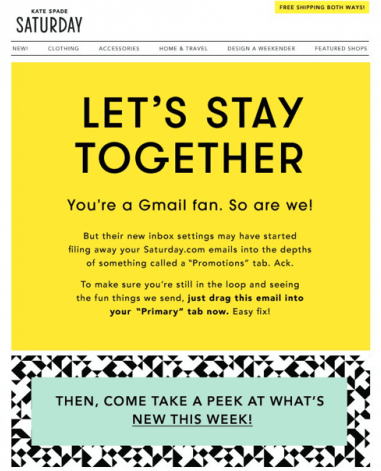
Major factors that affect email deliverability
There are a few hoops your emails need to jump through first to get to your subscribers’ inboxes. Email delivery rates ultimately come down to three areas: authentication protocol, reputation, and email content.
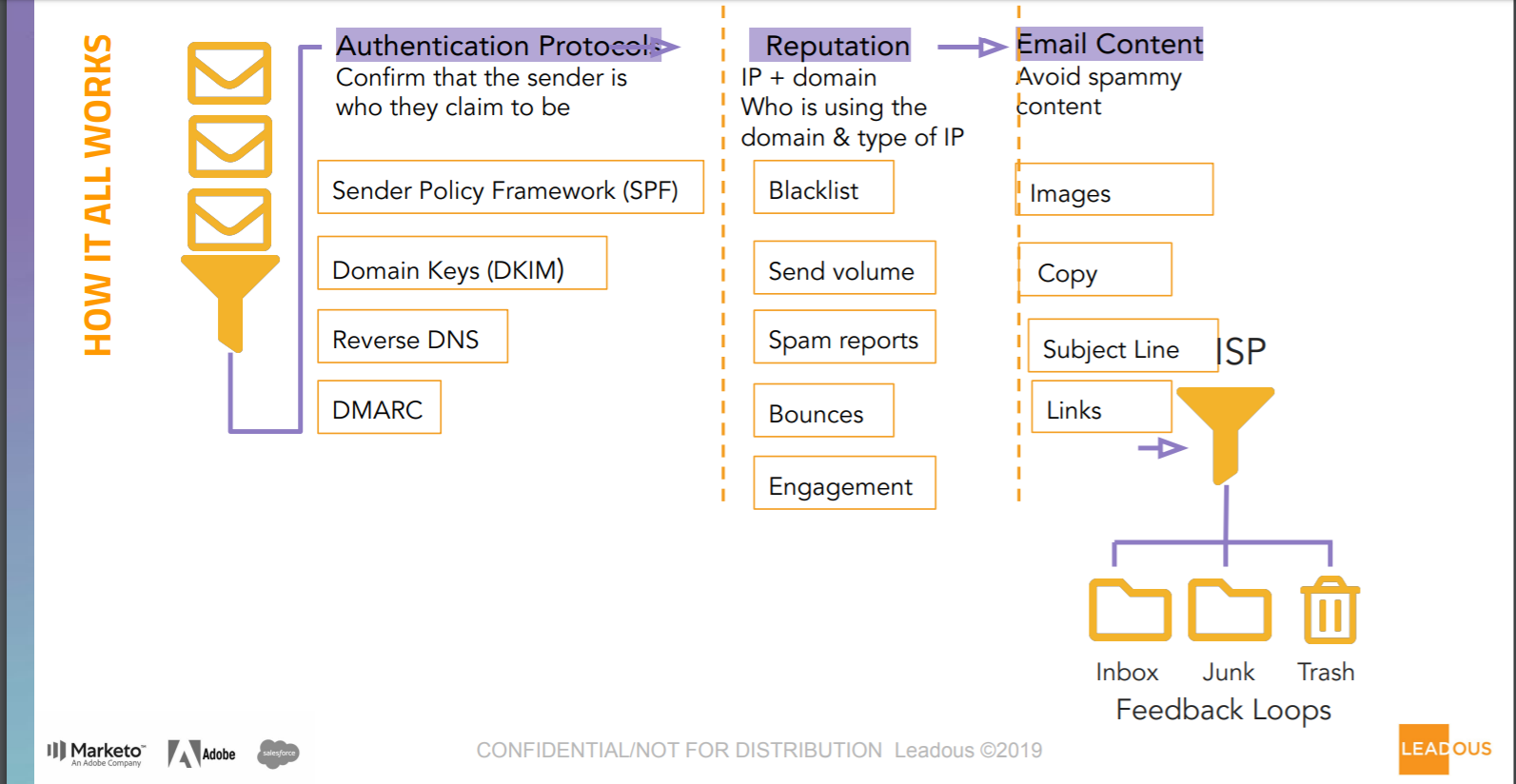
Authentication protocol
The first step of deliverability is confirming that you are who you say you are.
ESPs use the following to verify your sender identity:
- Sender Policy Framework (SPF). useful The mail server confirms that you are who you say you are by checking that the IP address you’re sending from is registered to your domain.
- Domain Keys (DKIM). The mail server confirms your identity by checking for a valid digital signature encrypted in the header of your email.
- Reverse DNS and Domain-Based Message Authentication, Reporting, and Conformance (DMARC). An informational policy that specifies if SPF or DKIM is being used for the email. In general, one of the two authentication protocols must be in place for DMARC to work. If one of the protocols fails, DMARC details what to do (for example, reject the message) and logs the failure to send in their system.
Dozens of acronyms aside, these protocols prevent spammers from forging your email address and passing off messages on your behalf.
SPF and DKIM can be configured with most major market automation platforms (e.g., Marketo, the platform we use). If you’re sending high volumes of email, go through this process (with the help of your Network Administrator) to configure and prove your sender authenticity.
Reputation
Your reputation is the next factor in deliverability. This is calculated based on how trustworthy your emails are to subscribers and a number of factors, including whether your IP has been blacklisted or reported as spam. Additionally, the percentage of bounces in your email list and engagement level of your subscribers matters, too.
ESPs will actually quantify subscriber engagement with your emails to determine whether your message is trustworthy. In particular, ESPs will look at:
- Emails opened (and time spent reading);
- Emails forwarded and replied to (a positive indicator of engagement);
- Emails deleted before reading or marked as spam (a negative indicator of engagement).
You can use tools like Sender Score to closely monitor your reputation metrics. Sender Score looks at your IP address’s “sender reputation, including spam complaints, how many unknown users you email, if you’re on any industry blacklists, and more.”
By keeping an eye on all these factors, you can hone in on where you may need to improve your deliverability strategy for reputation management.
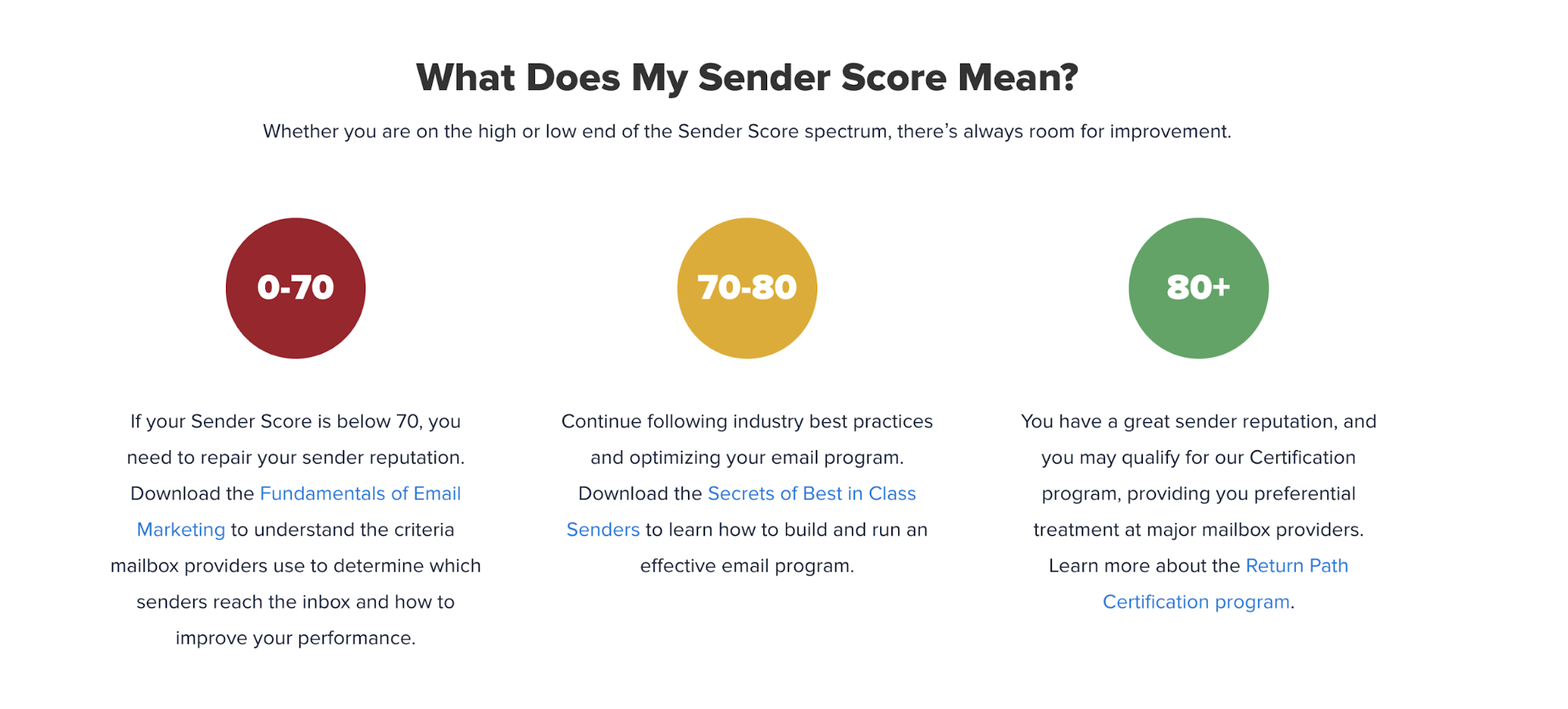
If you get put on an “email blacklist,” you can then take the appropriate steps to get removed. There are multiple tools to help determine if you’re on a blacklist, but always start by asking your marketing automation platform rep or partner.
Most marketing automation tools can help sort out what your blacklist issues are, as they maintain relationships with major blacklists to control their own sender reputations. None of the tips below matter much if you’re stuck on an email blacklist.
Email content
The last factor affecting your email deliverability is the actual email content. Whereas authentication protocol and reputation are partly out of your control (and up to ESPs and subscribers to determine), optimizing your emails for deliverability is 100% within your control.
To optimize your email content for deliverability, avoid spammy subject lines—a lot of punctuation and capitalization is out; clear, simple language is in.
Everything down to the images, content, links, and code making up your email are analyzed for a deliverability rating.
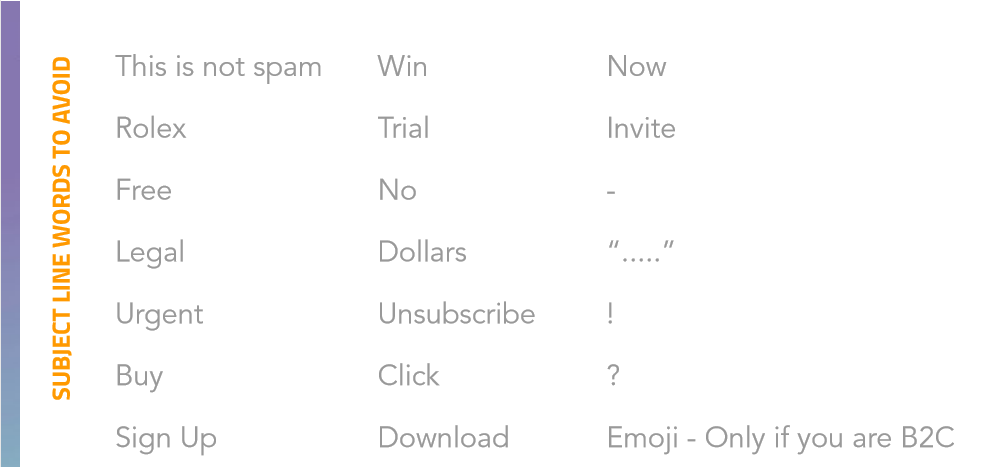
Quality content not only ensures you aren’t seen as spam but can affect engagement as well. If your subscribers look forward to your emails, your open rates are naturally going to be higher, which can, in turn, positively affect your deliverability rates.
Marketing automation platforms can help with deliverability
It’s in your ESP’s best interest to help your emails get delivered. Many ESP providers can help you optimize your email campaigns.
The first step is to review your email statistics for low engagement—depending on your industry and subscriber list, a low engagement could look like something below a 15% open rate or 3% click-through rate, but it’s best to compare against your historical data and your industry’s benchmarks.
If you notice low engagement, reach out to your marketing automation platform provider about their deliverability features. Ask for any additional deliverability data and testing they can provide.
Many platforms have built-in tools to test your emails for clean code and images, or subject lines that can get flagged as spam. You can even preview your emails across different ESPs to make sure they’re rendering correctly.
Best practices to improve your deliverability
1. Institute a deliverability initiative.
Make deliverability a central part of your email marketing strategy, not a side project that you look at for a month—and never again.
Create a standard email deliverability checklist that you can go back to for every campaign (including checking the message, creative, design, links, and accessibility).
It also helps to set recurring checkpoints to go back and check the results of previous campaigns.
2. Clean your data.
If you’re taking the right steps to set up the technical portion of deliverability (see SPF, DKIM and DMARC explanations above) much of the remaining portion of your deliverability rating comes back to the quality of your subscriber lists.
If a significant portion of your lists are unengaged, this will lower your deliverability rating. Consider archiving subscribers who haven’t engaged in 60 or 120 days, or simply segment them out for a “last chance” nurture and allow them to choose whether they re-opt in or not.
Here are a few creative examples:
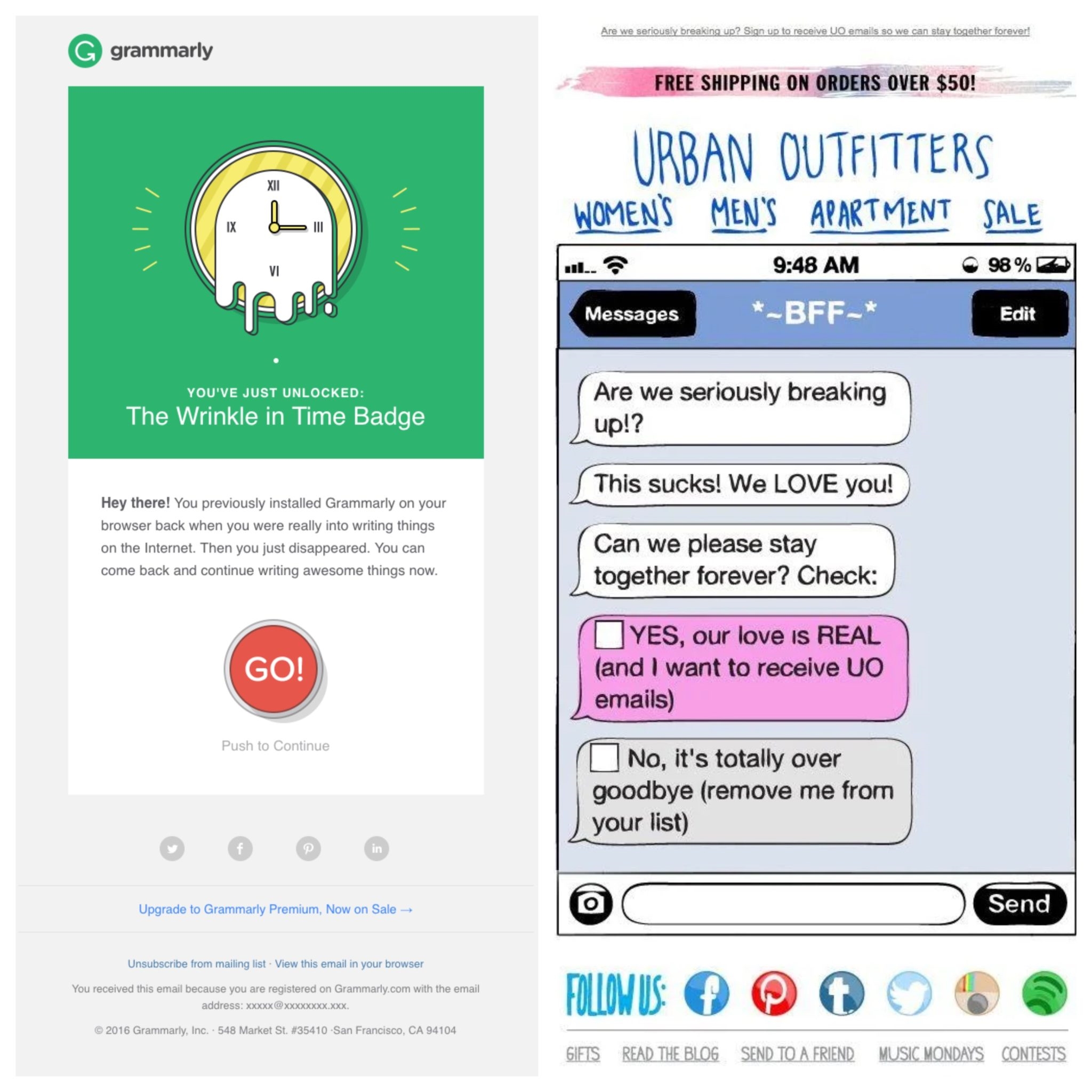
Keeping stagnant subscribers in your lists sets you up for possible spam flags and lowers your success rate. Re-engagement campaigns are also an excuse to get a little more creative with your emails—it’s your last chance to capture their attention.
As a marketer, it may be painful to cut your list by 10% or even 20%, but improved engagement is many times worth it.
Sidenote: Cleaning your lists also means taking a look at where you get your subscribers from. Stop buying lists. We’ll say it again: Stop buying lists! Purchased lists (with no verified opt-in) can seriously harm your deliverability—they can become spam traps or simply push your messaging to unengaged addresses, also harming deliverability.
3. Segment your audiences.

How can you ensure that the emails you’re sending are going to subscribers who will be interested and engaged? Strategic segmentation plays a large role.
If you have an event that is available only in a certain area—are you segmenting your audience invite list to the target geography? Are you segmenting your emails based on whether they have purchased or opened your email in the last 90 days? How about by subcategories that subscribers may be interested in?
As highlighted previously on the CXL blog, “Despite these proven and known benefits, most businesses continue to ignore email segmentation or do it incorrectly. In a survey of 1,500 participants, almost 50% of subscribers continue to receive irrelevant emails on a daily basis.”
Segmenting your audiences and campaigns allows you to keep your content relevant, increase your engagement, and make for happier, better-served customers.
If you do segment your list, keep your messages clear and provide actual value related to your business. Don’t take advantage of subscribers’ trust; you’ll receive only unsubscribes, disengagement, or, worse, spam complaints.
Approach the opt-in process with subscriber value in mind (what will they get out of these emails) instead of just the value to your marketing program.
4. Launch a preference center.
You’d much rather have an unengaged reader unsubscribe than become unengaged or hit the spam button—both of which affect deliverability more.
Beyond a clear path to unsubscribe, consider launching a preference center to help your subscribers customize their email experience with you. Let them choose subcategories they’re interested in or email frequency. Some subscribers may love your content but not want to receive several emails a week—that’s perfectly okay.
It’s also worth repeating: Make it easy to unsubscribe. Don’t try black-hat tactics like hiding your unsubscribe button in a low-contrast color. If it’s difficult for subscribers to unsubscribe, they’ll likely just hit spam and report you.
If you’re going to allow subscribers to opt in or out of multiple lists, always include an option to “unsubscribe from all” at the same time.
Here are a few examples of preference centers with clear opt-in preferences for segmentation, as well as easy ways to unsubscribe. (CAN-SPAM requires an unsubscribe option.)
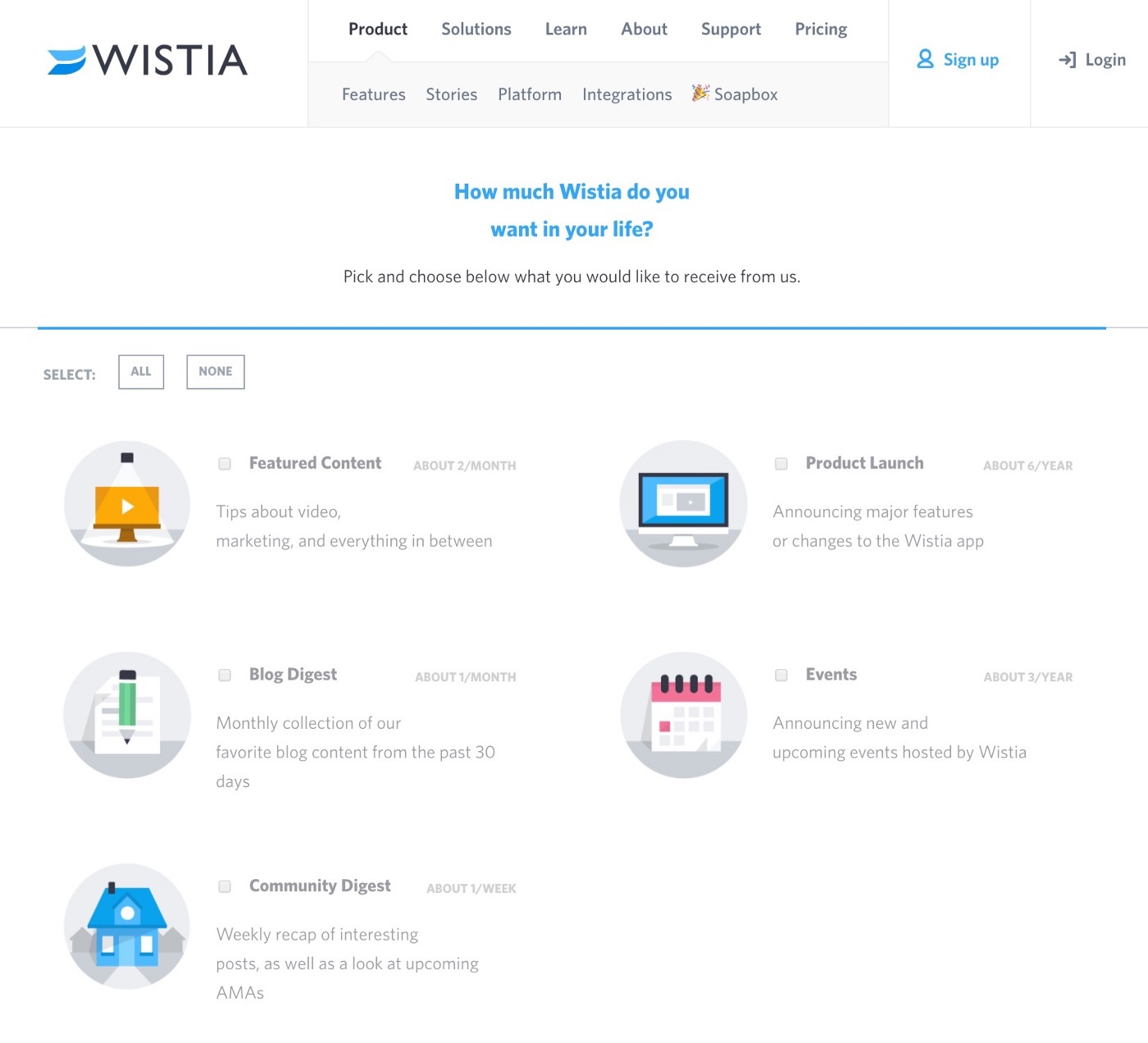
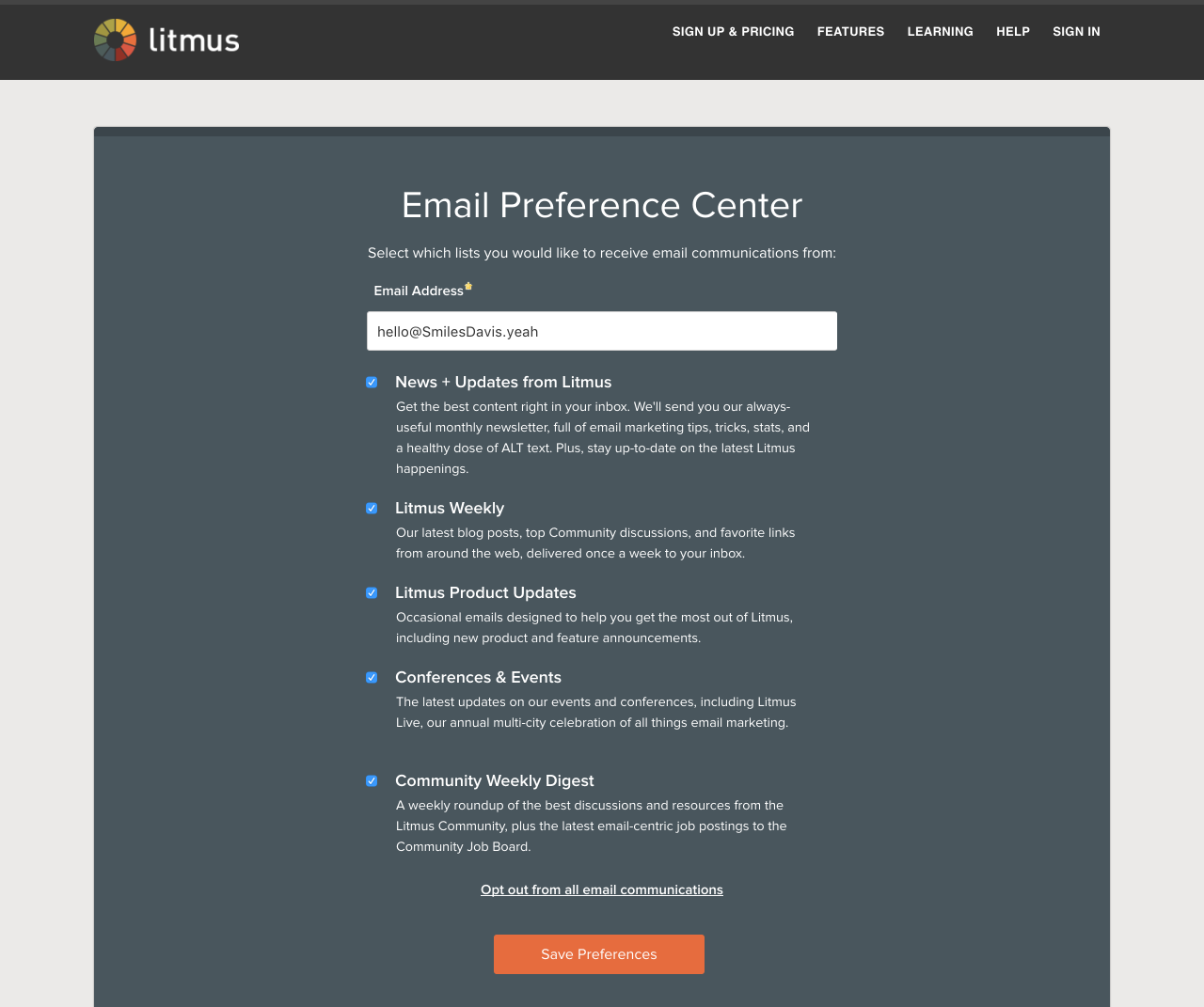
5. Test your emails every single time.
Don’t forget to test your emails before you send them. Use tools like Litmus to evaluate your deliverability rating and make sure your emails render correctly across ESPs.
Litmus in particular can send a sample of your email across 90+ different ESPs in seconds, so you can quickly check for rendered images. It also checks for bad links, missing alt tags, excessive load times, and more.
Most ESP’s have a “send test email option.” It’s a good idea to send an email to several members of the team. Does it look good on desktop? What about mobile? Do all the links in your email work?
Don’t lose subscribers because you failed to make simple fixes.
6. Send consistently and not too often.
While the number of emails you should send depends on your industry and audience, avoid flooding your subscriber’s inbox, especially if it’s at the cost of lower-quality content.
Keep an eye out for an abnormally high amount of unsubscribes. Decide on a consistent publishing schedule and stick with it. Overloading your subscribers with email can lead to burn out, and if your subscriber has four emails in their inbox from you to wade through, chances are they will ignore some—again affecting the engagement rates of those emails.
Email deliverability can also be affected by the timing of your sends. Sudden increases or drops in email sends can crater deliverability.
This became a potential deliverability issue at the beginning of COVID-19, when many brands, particularly in retail and travel industries, began sending increased amounts of emails to more subscribers.
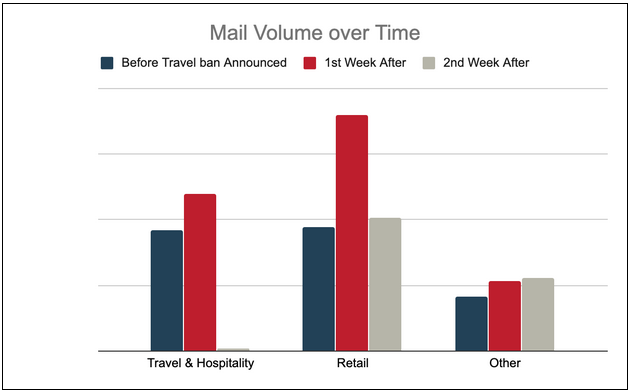
Conclusion
Plenty of technical factors go into email deliverability, like SPF and DKIM. For those, you’ll need the help of a network administrator. Others are as simple as deleting all those exclamation points from your subject lines.
As you implement more best practices, your deliverability should improve, but it’s a constant ebb and flow that you need to monitor. Keep an eye on your sender scores, check blacklists, and prioritize areas where you can continue to make headway on deliverability.
Digital & Social Articles on Business 2 Community
(70)
Report Post
 (
( (
(








